The adventurer inches across the window ledge, his face scraping the brick wall, the fury of the Niagara River rushing beneath him as he scales the side of an abandoned power station. Three hundred yards upstream are the famous Niagara Falls.
It is night, and the 25-pound camera bag on his back doesn’t help as the professional photographer and his group make their way across the ledge without harnesses. One wrong move and they’re all going over the falls.
While this might sound like an Indiana Jones-style movie script, it’s far more grounded in reality than you might imagine—for photographer Chris Hanlan it is a part of his everyday life. Hanlan is an urban explorer.
Archivists, not vandals
 Hanlan, and many other people like him all around the world, may seem like adrenaline junkies looking for their next dangerous fix. But he’s a part of an activity that combines the unlikely duo of adventure and respect for the urban environment.
Hanlan, and many other people like him all around the world, may seem like adrenaline junkies looking for their next dangerous fix. But he’s a part of an activity that combines the unlikely duo of adventure and respect for the urban environment.
Urban explorers investigate and often photograph the abandoned or off-limits urban areas that are forgotten by the rest of society. These places include steam tunnels, storm drains, churches, neglected hospitals or plants, and closed areas of in-use buildings.
Jarold Dumouchel, who runs the urban exploring photography website Urbex Playground, said the goal is to experience new, interesting places while capturing unique photo opportunities.
The Montreal-based photographer and web developer said the most important thing is the distinction between urban exploring and what the uninitiated see as similar: vandalism and breaking and entering.
“The main concept is just to take pictures and leave behind footprints,” Dumouchel said.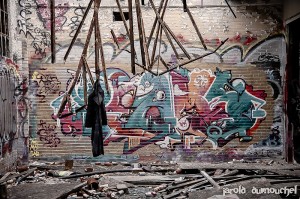
Many urban explorers are professional photographers or photography enthusiasts who post their pictures online to build their portfolio. Some, like Hanlan—who got into the exploration side as a child—consider themselves explorers first who just happen to take photos.
“There’s a lot of people who explore and don’t take pictures. I just happen to be a professional photographer that takes pictures in abandoned places. So it’s a means to an end for me,” Hanlan said.
Despite making up a large number of active urban explorers, photographers aren’t responsible for the creation of urban exploring, though they had a significant effect on the popularization of the sport. The modern understanding of urban exploring began in the ‘90s, Hanlan said.
Cave Clan, a group of explorers in Australia, gained notoriety by exploring storm drains, which attracted a following of like-minded people looking to get involved, Hanlan said.
Because the Internet started to increase in popularity around this time, people shared their experiences online, Hanlan added. 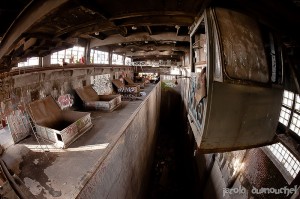
This mass interconnection of ideas led to a surge in popularity for the activity, leading to websites like uer.ca, a forum-based site for urban explorers.
Though the modern, Internet-based approach to urban exploring is relatively new, Hanlan maintained that the activity is as old as buildings themselves.
“People have been going in abandoned buildings since there were buildings, and people have been taking pictures as long as there’s been buildings and cameras,” he said.
Illegal adventuring
Entering abandoned or closed-off buildings comes with a host of issues, one of which is the murky grey area of the law. 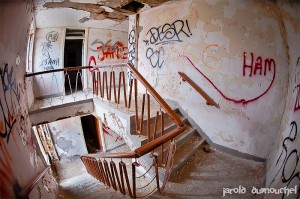
Montreal photographer Frederic Ansermoz admitted that the sport is generally illegal, except with explicit permission from the land or building owner. In areas that look completely abandoned, the land could be owned by a developer or the government.
“Even if you can enter into a place with no fences or anything else, they are most of the time not on the public domain, and so what you are doing there is totally illegal,” he said via email.
Dumouchel said he tries to contact the owner as much as possible, but because of time constraints, sometimes the wait is too long and he and his group have to take the chance they’ll get caught.
Each time urban explorers venture into abandoned places, they run the risk of being charged with trespassing, or in serious cases, breaking and entering, he said.
Hanlan said he’s never been charged because he “respects the limits” of the activity. Taking souvenirs from the site, being loud and obvious, or picking locks are definite faux pas in the urban exploring world.
“Never pick a lock, never break in. Mother nature will make a way in,” he said. “If there’s a hole in the roof or hole in the foundation, I’ll find a way in. But if I have to pick a lock or break down a door, I’m not going,” he added. 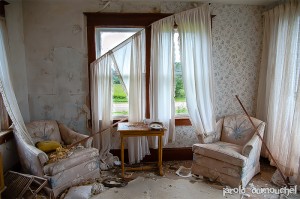
At a century-old abandoned hospital outside of Glasgow, Scotland, Hanlan couldn’t find a way in on the first floor without breaking in, so his group borrowed an old ladder to scale the second floor where a window was already open.
Their ingenuity backfired when they were spotted from the second floor by an on-site guard, who sat outside the building, intently staring them down and waiting for hours into the night until he finally had enough and drove off.
One way photographers like Ansermoz and Hanlan have worked around the law is to use their secret weapon to the fullest extent: their camera.
“I won’t say having a camera gets you out of trouble, but it’s no harm no foul sometimes. People are like, ‘What are you doing?’ Well, I’m just taking pictures,” Hanlan said.
“At least, it’s better if someone sees you inside an abandoned building with a camera, rather than spray cans or a crowbar,” Ansermoz explained.
A dangerous hobby
Legal risks aren’t the only problems urban explorers face. Abandoned buildings are abandoned for a reason: disuse, neglect, and rotten structures are the norm.
Poisonous mould and asbestos are common in old buildings, hazards that Hanlan said sometimes keep him away from even the most interesting abandoned places. Soft, unstable floors, crumbling rooftops, broken glass and squatters can be trouble as well. 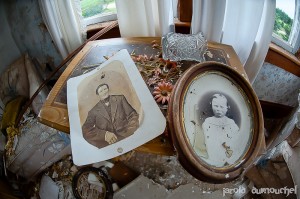
While exploring the famous Canada Malting Plant in Montreal in 2009, the first large abandoned place he went to, Ansermoz said he walked on the plant’s silos with only thin, hole-ridden tarmac keeping him from falling through.
Dumouchel stressed that while danger is a part of the urban explorer’s lifestyle, taking precautions like going in groups and bringing first-aid kits is integral.
“Most of the time we don’t take many risks. We’re not crazy, we do this for fun. I won’t get a million dollars for my pictures, so I prefer to stay alive,” he said.
For people living in Ottawa hoping to do some urban exploring of their own, they may be out of luck. Security over the past five years has clamped down, Hanlan said, pointing to the recent ability to buy cheap wireless cameras.
The set-up of a capital city means it isn’t the best place to go exploring, either. With the high security of a government city, it’s difficult to find abandoned buildings that aren’t secured or scheduled for demolition, Hanlan explained.
Because of this, many urban explorers prefer to stay low profile, both to deflect unwanted legal problems and to avoid good quality sites getting shut down from increased public attention.
Despite the legal and physical risks involved, enthusiasts aren’t deterred. In fact, sometimes it’s the very nature of the sport, the beauty, danger and heart-pumping adrenaline, that keep these eternally curious adventurers coming back for more.
“Walking on broken glass, and the sound of crackling paint when you walk on paint chips . . . it’s really addictive,” Hanlan said.
“I’ll do it until I’m dead.”
Reporter Cassie Hendry accompanies urban explorer Chris Hanlan on a trip to one of Ottawa’s local exploring sites.






